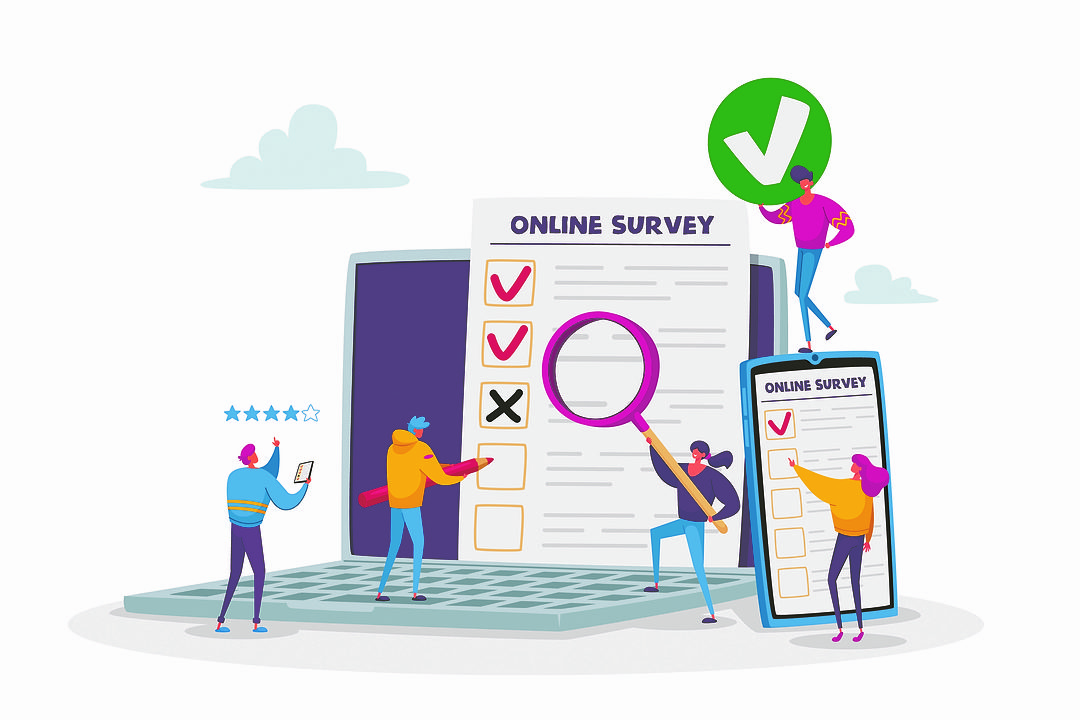Examining Your E-Commerce Investment
Embark on a substantial intelligence-gathering project with your intended audience — either a B2B or B2C strategy.

When a subject keeps rearing its head for the past week during client and facilitation calls, some would call it a sign. I call it an opportunity. I love it when my professional interactions serve up a column topic on a silver platter. This one just seemed so appropriate, given the state of distribution in 2021.
For the past week, the topic du jour seemed to be e-commerce improvements and where to make the investment. With my private client, he has a solid web presence with a robust e-commerce offering. He doesn’t see the results he was hoping for and is contemplating the next infusion of cash to improve his return on investment.
Some improvement areas make sense and could potentially provide additional success, but the actions seemed to be a lot of guessing and not a lot of strategy. This is pretty common in privately held distribution today. E-commerce and web development are foreign territories to business owners who developed their companies on old-school, pound-the-pavement, blocking-and-tackling distribution.
To think that distributors, myself included, can be masters of this domain is wishful thinking. This isn’t our ball of wax and maybe it shouldn’t be.
As we talked through the challenge, we realized that the current strategy was lacking purpose. What I mean is, we realized that e-commerce can be broken down into two distinct components. B2B (business-to-business) is what most distributors built their businesses around. B2C (business-to-consumer) has always been a lucky byproduct of a showroom or retail presence.
When distributors set out to build a strategy, they need to decide how their e-commerce strategy will align with each side. I truly debate whether B2C should be considered until the company has a performing B2B program going, but some will try. Here’s a little perspective — you ain’t Amazon and you never will be.
Focus on Customer Needs
If the goal is to build a tool for existing customers, we need to focus on their needs first. In one of my groups, a participant talked about building a “digital customer experience.” The goal is to give those customers the option of shopping outside of the confines of their regular hours. Since other competitive supply houses are offering this option, this goal makes sense.
But if this will be a “customer experience,” why am I wasting a bunch of time dreaming up functionality that I think the customer is going to want? I may have been in the business for a while and have some insight into the buying preferences of my customer base, but am I clairvoyant?
In this humble advisor’s opinion, I wouldn’t drop another dime into my B2B e-commerce solution until I embarked on a substantial intelligence-gathering project with my intended audience. In the spirit of full disclosure as I wrap up the overhaul of my website, I failed to take the advice I am now shoveling your way. Hindsight is 2020. Do as I say, not as I do.
I failed to reach out to my past and prospective clients and survey them about what would make my site more of a resource. In a service-based business, the smart ones spend money to serve customers, not their own ego.
As I have written several times in the past, gathering the voice of the customer is a skill every business should develop. I get it; we think we know our customers. We just don’t know them well enough. Unfortunately, our knowledge may be dated, biased or taken from too small a sample size. Establishing a customer feedback program can be as simple as conducting a web-based survey or as complex as having experts analyze your phone interactions.
Relying on your sales team to gather this feedback is not advisable; there is simply too much bias. For most distributors, I would suggest a survey with input from someone specializing in customer interaction analytics. Martha Brooke of Interaction Metrics is who I refer my clients to, but I am sure several good resources are out there.
And don’t just survey the people who buy products from your company. Make sure to hit those in accounts payable as well. A really solid feature of many e-commerce sites is the ability for a customer to log in to their own portal. This is probably not new to anyone, but for the sake of clarity, I will press on. Your customers’ accounting departments often use this portal to chase down invoices and statements so they can pay you. It will take a tremendous about of phone time off your accounting team. This alone can provide a return on your technology investment.
Search Engine Marketing
For those of you looking to include a B2C play, please excuse my previous snarky comment. You may possess a proprietary item or even a private label solution that could be something for the masses. You may be a used equipment dealer who doesn’t necessarily look for existing customers to sell. So how do you get potential buyers to swim up to the boat?
In the old days, it was a lot of smiling and dialing. One client was advised to hire a road warrior to canvas potential buyers. While this might have worked a couple of decades ago, I don’t think it is the way of the future. Let’s do a little math. A salaried and benefited salesperson might cost around $100,000 a year. Add travel expenses of another $25,000 to $30,000 a year, and you have a significant investment that will probably produce dismal results.
Why not take that same $130,000 investment and invest in some serious digital marketing muscle? Now I’m not talking about some slick SEO salesperson who promises to get you a higher rank on Google. SEO – so what? It’s time to look at the world of SEM (search engine marketing).
I am no expert on SEM, but I am becoming more familiar with the possibilities through my clients' eyes. Did you know that you can target a specific area, filter by desired demographics, and everyone in that area will potentially start seeing your ads on their social media feeds? Super creepy, right? Have you ever wondered why you can Google a certain product on your computer and, over the next few days, the same product starts appearing in your Instagram feed? SEM.
Imagine you are selling used HVAC equipment for commercial spaces. What if you could draw a geofence around the next local Building Owners and Managers Association) chapter meeting? Over the next few days, your equipment starts showing up in their media feeds. It’s almost like cheating. If you are serious about going after a B2C play with your e-commerce program, I suggest you get educated on the wild, Wild West of search engine marketing.
If 2020 taught us anything, we all need to better understand the world of e-commerce strategy. As a crawl-walk-run kind of guy, I would always try to play to your strengths first. If you are a traditional B2B distributor, start there. Survey your customers, either through a professional or not, and find out what they want to see in a web portal. Focus on that true customer experience. If your product mix lends itself to a more B2C play, get really focused on driving traffic to your site.
It’s a brave new world out there that might be better managed by those who have a long career ahead of them.





